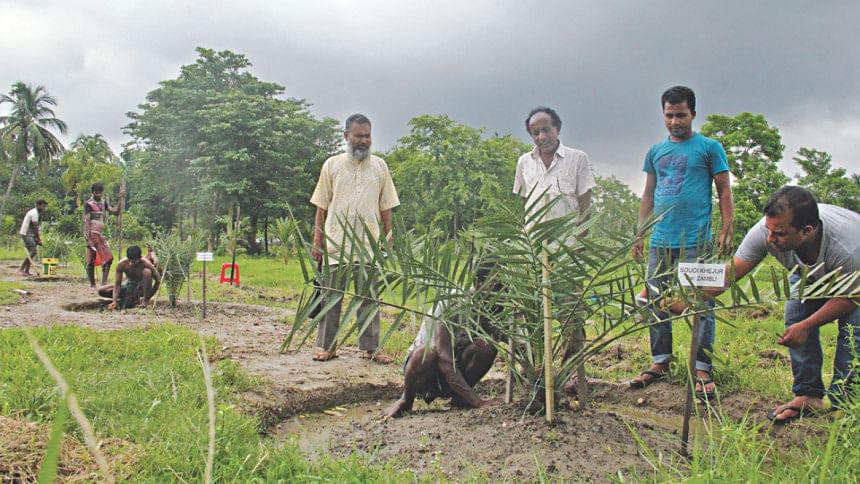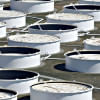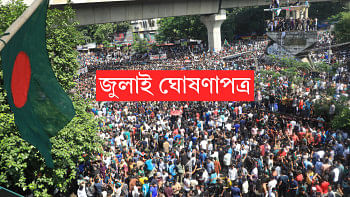Date palm shows hope

Cultivated in the Bengal region since time immemorial, the native sugar date palm, locally called 'khejurer gachh', is well-appreciated, primarily for its syrup. Now, for the first time in southern Bangladesh government horticulturalists are trialling a number of Middle Eastern date palm varieties, of the distinct species renowned for its well-known fruit. If the trial plantation proves successful, it is hoped that date production can be a new agricultural industry for the region.
Dates have been a staple food in the Middle East and Indus Valley for many thousands of years. The fruit of the date palm, a tree which may originally be native to modern-day Iraq, have featured on the plates of diners since ancient times, admired for their sweetness in Ancient Egypt and Mesopotamia. Nowadays the tree is widely cultivated throughout the Middle East, North Africa, and in tropical and subtropical regions worldwide.
The horticulture centre in Barisal's Babuganj upazila is attempting to add southern Bangladesh to the world's date-producing regions. “We have planted 73 date palms of eleven varieties thus far, in what is a first for the country's south,” says the centre's deputy director Swapon Kumar Halder. “If we succeed in producing quality dates, we plan to encourage a local industry. Potentially, thousands of farmers will benefit.”
Previously individuals in the area may have germinated date palms from seed, but a palm grown from seed usually produces less and poorer quality fruit, as well as taking longer to mature. Dates from seed-grown palms commonly lose their taste, horticulture centre officials say.
Besides, date palms have male and female plants, with only the female plants bearing fruit. As such, any attempt to plant a single palm without opportunity for pollination must result in no fruit at all.
Thus the horticulture centre trial has adopted the more-usual commercial propagation method of cuttings. “Our trees come from tissue culture brought from Saudi Arabia,” says Swapon. “We hope that in three years' time these trees can produce between one and three hundred kilograms of dates per season.”
“Eleven varieties have been chosen,” Swapon continues, “so that we can assess which varieties are best suited to our soil and weather conditions.” The soil for the palm plantation is prepared with cow dung and sand. Each row of palms is divided by a canal.
“The idea of growing date palms,” explains Shah Imran, research officer at the centre, “comes from the local nutrition development project with its aim of year-round fruit production. Diversifying the types of fruit grown in southern Bangladesh can help achieve this aim. It was the project's consultant M Enamul Haque who inspired us to try cultivating dates.”

 For all latest news, follow The Daily Star's Google News channel.
For all latest news, follow The Daily Star's Google News channel. 







Comments